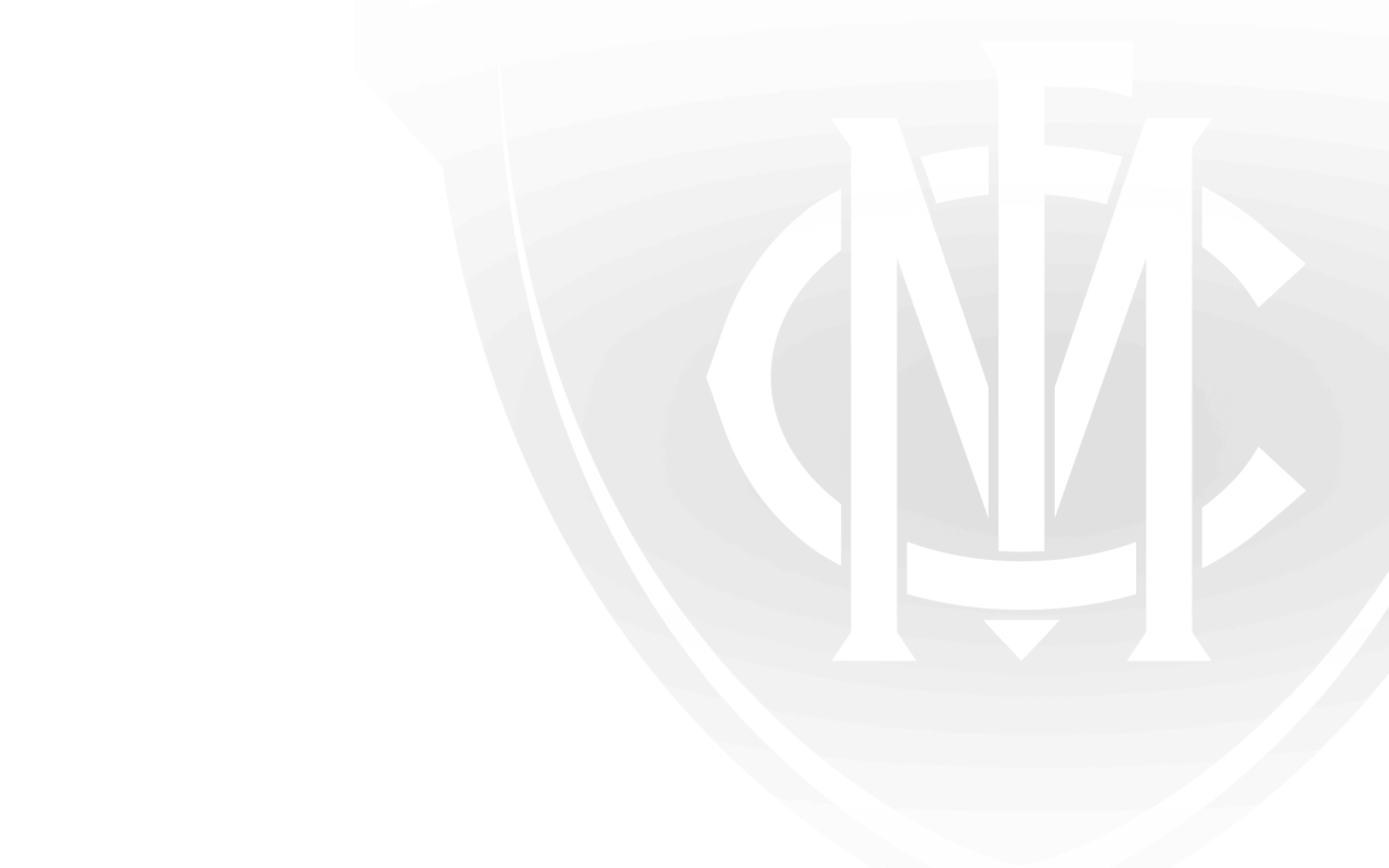The Melbourne Football Club played what was effectively an intraclub game on ANZAC Day 1925, described in the Argus as “a delightful exhibition… quite up to League standard”. The players were split between those who had served, and those who had been just too young for service.
There would have been sadness among the group. One of Melbourne’s great losses in WWI was defender Arthur Mueller ‘Joe’ Pearce, who retired in 1913 after playing 152 games. He was cut down at Gallipoli on 25 April 1915. His cousin, Jack Mueller, would be a star in the next generation of players.
These years in the early 1920s were confusing times for many, and at no time more so than ANZAC Day. The occasion was important, but not yet properly organised. It was barely half a dozen years since Armistice Day. Breweries were urged to close on ANZAC Day, horse racing was halted, and city shopkeepers were requested to cease trading for the first half of the day. 25 April was a typical autumn day in Melbourne, hitting nearly 18 degrees after a low of 10, with just a smattering of rain to keep life interesting and the MCG turf slightly damp.
Who was there on that day? We cannot be completely certain. But, running down Melbourne’s team list shows names that then appear in wartime records:
Jack ‘Snowy’ Cannan was a youngster who served in France, then came back to play six games with Melbourne in 1925 and 1926. He was a biscuit maker who went on to become a policeman.
Albert Chadwick was an interesting character who specialised in aviation engineering, and worked his way through Egypt to find landing sites, often with the Light Horse or Camel Corps. He was recognised with a Meritorious Service Medal and was Mentioned in Dispatches. By 1925, he was an experienced player for Melbourne, having made his senior debut in red and blue in 1920 after forging a memorable career at Prahran. Chadwick went on to captain Melbourne to a premiership in 1926. In charge of RAAF recruiting during WWII, pivotal in the development of the Gas and Fuel Corporation, and a leading sports administrator of both the Melbourne Cricket Club and Melbourne Football Club, ‘Bert’ Chadwick would ultimately be knighted for his services to the community in 1974.
Bob Corbett was a rare battler, who would miss the 1926 premiership after being injured in the Preliminary Final flurry against Essendon. This incident led to formation of the rule that allowed a reserved player to replace an injured teammate during a game. The injury was probably a small misfortune for Corbett, who was gassed in France in 1917. Like Chadwick, Corbett was Mentioned in Dispatches and had a grand old career with the Melbourne Football Club, also making his senior debut in 1920. Sadly, Corbett’s son was killed in WW2 while serving with the RAAF in England as part of the Empire Training Scheme.
George Heinz (Haines) had an unusual war, serving as a masseur, both on Sea Transport and Home Service, rising to the rank of Staff Sergeant. Having started his playing career with Geelong, Heinz served as captain-coach in the winless season of 1919, then remained captain in 1920. He played 106 games for Melbourne between 1919 and 1925.
Tom Jones was just starting out with Melbourne in 1925 and would go on to play 11 senior games in red and blue. He was one of the youngsters who missed out on WWI, but enlisted in the Army in 1942, aged nearly 38.
Frank Jorgensen, who played 13 games for Melbourne between 1925 and 1927 after time with Geelong, was another who missed out on WWI, but enlisted in WW2, finishing the war as a Major in the 56 Anti Aircraft Regiment.
Charlie Lilley had played for Melbourne before WWI, then volunteered to serve overseas. He was part of an exhibition game in London in 1916, before suffering severe gunshot wounds in June 1917, in his thigh, abdomen and chest. Regardless, he made his way back to the MCG, often training in a metal brace, and played 82 of his 132 games after returning from the war. Lilley retired at the end of 1925 but continued to serve his club as a committee man for several seasons.
Derek Mollison played 66 games for Melbourne between 1924 and 1928, then went on to serve in WWII. Serving in the Middle East and New Guinea, Mollison attained the rank of Captain in the 2/12th Field Regiment. Mollison was among 31 killed in an air accident when returning home for Christmas in December 1943.
Harry Moyes served as a sapper in WWI, undertaking bridge building, minefield clearing and demolition. He also took part in an exhibition game in London in 1916, appearing alongside future Melbourne teammate Charlie Lilley. Moyes suffered multiple severe gunshot wounds, with a bullet lodging in his back in early 1918. This saw him being sent back to Australia. Moyes resumed playing with St Kilda but came to Melbourne in 1925. He played 45 games in red and blue, including the 1926 premiership, with his goal scoring ability vital to the team’s success.
Frank Richardson was an 18-year-old boilermaker when he enlisted, going on to see extensive service in France. Richardson played two games for Melbourne in 1925. He is one of 2897 WWI service personnel recognised on the South Melbourne Great War Roll of Honor.
Charlie ‘Brum’ Streeter came from Maffra to serve with the 8th Australian Light Horse Regiment in WWI. Enlisting in September 1914, Streeter was part of major action right throughout the war. The 8th Light Horse was found everywhere from Gallipoli to the Battle of Beersheba, forging an indelible place in Australian military history. Streeter was part of all of this, only missing time with a gunshot wound to his foot and a bout of conjunctivitis. He went on to play 133 games for Melbourne between 1920 and 1928 and was a vital part of the 1926 premiership team, playing in the back pocket. Streeter also served in the Civilian Construction Corps in WWII, working to construct facilities such as aerodromes and fuel depots throughout Australia.
Ted Thomas came from Yarrawonga and was a late enlistment in WWI. He was a part of Graves Services in France, and went to Sutton Veny in Wiltshire, where military camps, hospitals and training facilities could be found. Returning to Australia, Thomas was ultimately admitted to the military hospital at Caulfield. His Melbourne debut came in Round One, 1921. Thomas played 104 games between 1921 and 1928, then had another short stint with the club in 1932. A piano mechanic by trade, Thomas served with the 5 Battalion Volunteer Defence Corps in WWII.
Ivor Warne-Smith ended WWI with the rank of Lieutenant, having seen extensive service before being gassed in April 1918. Upon his return to France in September, Warne-Smith suffered two gunshot wounds – one to his right leg and one to his head – which ultimately saw him being shipped home to Australia at the end of March 1919. He had lost both of his older brothers in the war. In July 1919, Warne-Smith played his first game for Melbourne. After this season, he headed to Tasmania to manage an apple orchard and lead local football side, Latrobe. His return to the mainland in 1925 was the real start of a legendary red and blue career. Warne-Smith played 146 games, including the 1926 premiership, for Melbourne. He won the Brownlow Medal in 1926 and 1928. At the age of 43, Warne-Smith enlisted and served in WWII. Rising to the rank of Major, he finished the war commanding the 4th Bulk Petroleum Storage Companies in New Guinea and Borneo. Warne-Smith was honoured with a Mentioned In Dispatches for his leadership in Borneo before returning to Melbourne and resuming his links with the red and blue fraternity, serving as chairman of selectors and mentor to Norm Smith, helping to forge a new generation of success at the Melbourne Football Club.
Alf Wilson was another of the 1925 team who was too young to serve in WWI, but almost too old to serve in WWII. In 1925, he was playing the last three of his 41 games for Melbourne, having started out with the team in 1921. He played as a wingman at the same time his brother Percy was Melbourne’s coach. Just short of 40 when he enlisted in 1942, Wilson attained the rank of Flight Lieutenant in the RAAF, his service taking him as far afield as New Guinea, before being discharged on compassionate grounds of his own recognisance in late 1944.
Max Wright was another who was too young – born in April 1901 - to have served in WWI but was able to contribute in WWII. Enlisting in March 1943, by the end of the war he was a Warrant Officer with 7 Airfield Construction Squadron, RAAF. Undoubtedly, his employment experience as a General Construction Foreman and Dam Inspector played a significant part in this. Wright played two games for Melbourne; one in 1924 and one in 1925.
These are the players of 1925; varied in their involvement, many of them were brought together by that game on ANZAC Day. Seventy years later, the first AFL fixture on that day started, with Essendon and Collingwood playing the first of thirty commemorative games to 2025.
But, on this day in 1925, with a small but undoubtedly keen crowd gathered at a very different MCG to that which we know now, the ‘Football Practice Match’ played by Melbourne players raised £19, which was passed on to the RSSILA. As many of the players had served, as many would serve, so they played on that day 100 years ago – ANZAC Day, 25 April 1925.
An extended version of this article appears in Issue 84 of The Yorker, Autumn 25 (Journal of the Melbourne Cricket Club Library).
An exhibition reflecting on the place of ANZAC Day in our game is on display in the Australian Sports Museum throughout Season 2025.


